Ethiopia
As the dust settles on what authorities in Ethiopia have described as an attempted coup in the Amhara region, many questions remain unanswered as to what exactly caused the death of five top officials.
Ethiopia’s army chief, the president of Amhara state and three other top officials were killed in two separate attacks.
While the government has said the attacks took place within the context of an attempted coup in Amhara and are possibly linked, the overall motives remain murky.
Here are five questions about the situation:
What happened?
On Saturday, what the government has described as a “hit squad” entered a meeting of top Amhara officials and opened fire, killing regional president Ambachew Mekonnen, his top adviser and the state’s attorney general.
A few hours later in Addis Ababa, some 500 kilometres (310) miles away, army chief Seare Mekonnen was shot dead by his bodyguard. A general visiting him was also killed.
The government said he was co-ordinating the response to the “attempted coup” at the time.
Prime Minister Abiy Ahmed’s office also said it appeared to be a “co-ordinated attack” without giving more details.
Was it an attempted coup?
French researcher Gerard Prunier, an Ethiopia expert, dismissed the idea of a coup.
“There was no attempt at a coup d’etat, because a coup d’etat implies significant movement of troops or the seizing of control of strategic points like airports or media.”
International Crisis Group analyst William Davison said there was no sign of an attempt at seizure of national power.
“It was definitely an attack on the Amahra leadership and there may have been an ambition to take control of the regional government, but (the attackers’) intentions are not clear,” he told AFP.
“Hopefully the government will provide more information soon on the incidents and the connection between them.”
Who is responsible?
Ethiopian authorities have pinned the blame on Amhara’s security chief Asaminew Tsige, who was gunned down by police while on the run on Monday.
Asaminew was only last year released from almost a decade in prison over a 2009 coup plot, under a mass prisoner amnesty that began under former Prime Minister Hailemariam Desalegn and continued under his reformist successor Abiy.
Analysts describe him as a hardline Amhara nationalist who was likely facing removal from his job over efforts to form a militia and rhetoric pushing for territory in neighbouring Tigray to be reclaimed.
He recently appeared in a Facebook video calling for civilians to arm themselves in preparation for attack and observers believe he was on thin ice.
“It is possible that his impending removal, supported by federal government … triggered the fatal attack,” ICG’s Davison wrote in a separate comment on Twitter.
The motives of Seare’s assassin meanwhile, are completely unknown.
What sparked trouble in Amhara?
Amhara is the second-largest region in the country, divided along ethnic lines into nine autonomous states, although there are about 80 ethnic groups overall.
Along with the Oromo of neighbouring Oromia, the Amhara spearheaded two years of anti-government protests over economic and political marginalisation which led to the fall of former premier Hailemariam Desalegn.
Abiy has embarked on a series of democratic and economic reforms to the authoritarian one-party state that have been praised across the globe, but at home the changes have unleashed ethnic violence and turmoil as different groups jockey for resources and power.
This has left hundreds of thousands displaced in bloody clashes along the borders of some of the regions in Africa’s second-most populous country, with a population of over 100 million people.
Like other regions in the country, Amhara has seen ethnic clashes, territorial disputes, and bitter political rivalry.
“Abiy Ahmed is very good at foreign diplomacy, and is a very intelligent man, but unfortunately for him, his understanding of Ethiopian politics is not good enough,” said Prunier.
“He has very much under-estimated the power of ethnic nationalism, in particular that of the Amhara.”
He said the Amhara, whose emperors ruled Ethiopia for over a century, struggled to accept the loss of power after the fall of the communist Derg military junta in 1991 which gave way to the powerful EPRDF coalition of four parties that has ruled ever since.
One of these is the Amhara Democratic Party (ADP), and with the EPRDF severely weakened after years of turmoil in the country, its members are finding themselves out-muscled by nationalist parties within the region.
Competition is especially heating up with the promise of democratic elections in 2020.
What next for Abiy?
The ambitious 42-year-old is faced with a potentially explosive situation that analysts say could snowball if not handled correctly.
“Obviously Abiy and his government need to restore order and ensure the situation doesn’t escalate, or spread into instability in other sensitive locations,” said Davison.
“Then Abiy, the federal government, and the ruling coalition need to acknowledge the scale of Ethiopia’s political crisis, which is driven partly by major rifts within the EPRDF and its consequent dysfunction.”
“This is the first step to addressing the problems and it will be hard to improve security, and so create conditions for a successful election next year, if progress is not made in this regard.”
Prunier believes the task could be very difficult in the face of a “moribund” EPRDF.
“The parties it is made up of have become minorities among the ethnic groups they are supposed to represent”.
AFP



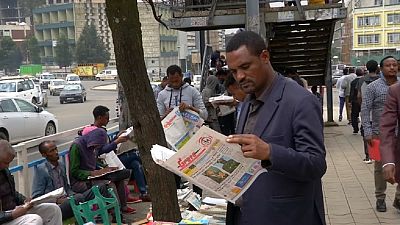


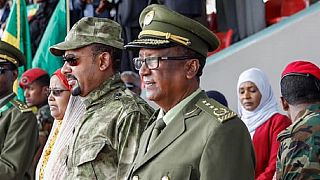

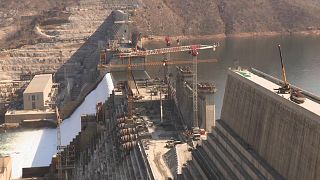
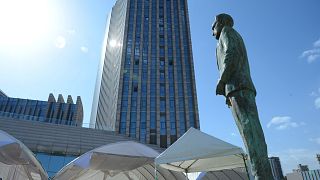
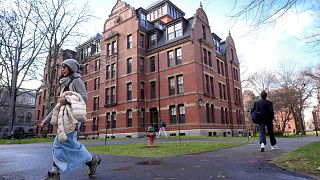
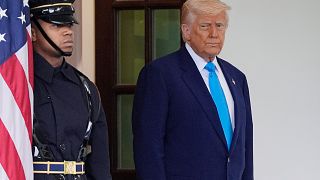
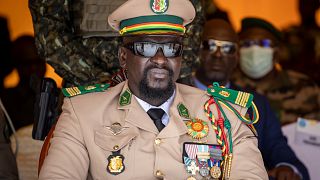

01:09
Guinea presents draft for new constitution, referendum set for September
01:00
Detained Chadian opposition leader Succes Masra ends hunger strike
01:35
UN and Haitian officials mark one year since Kenyan police arrived to support security efforts
Go to video
Nigerian president orders crackdown on gangs after 150 killed in conflict-hit north
01:14
Mali: Assimi Goita could soon be president until 2030 - without an election
Go to video
Wagner group announces withdrawal from Mali after “mission accomplished”